Introduction
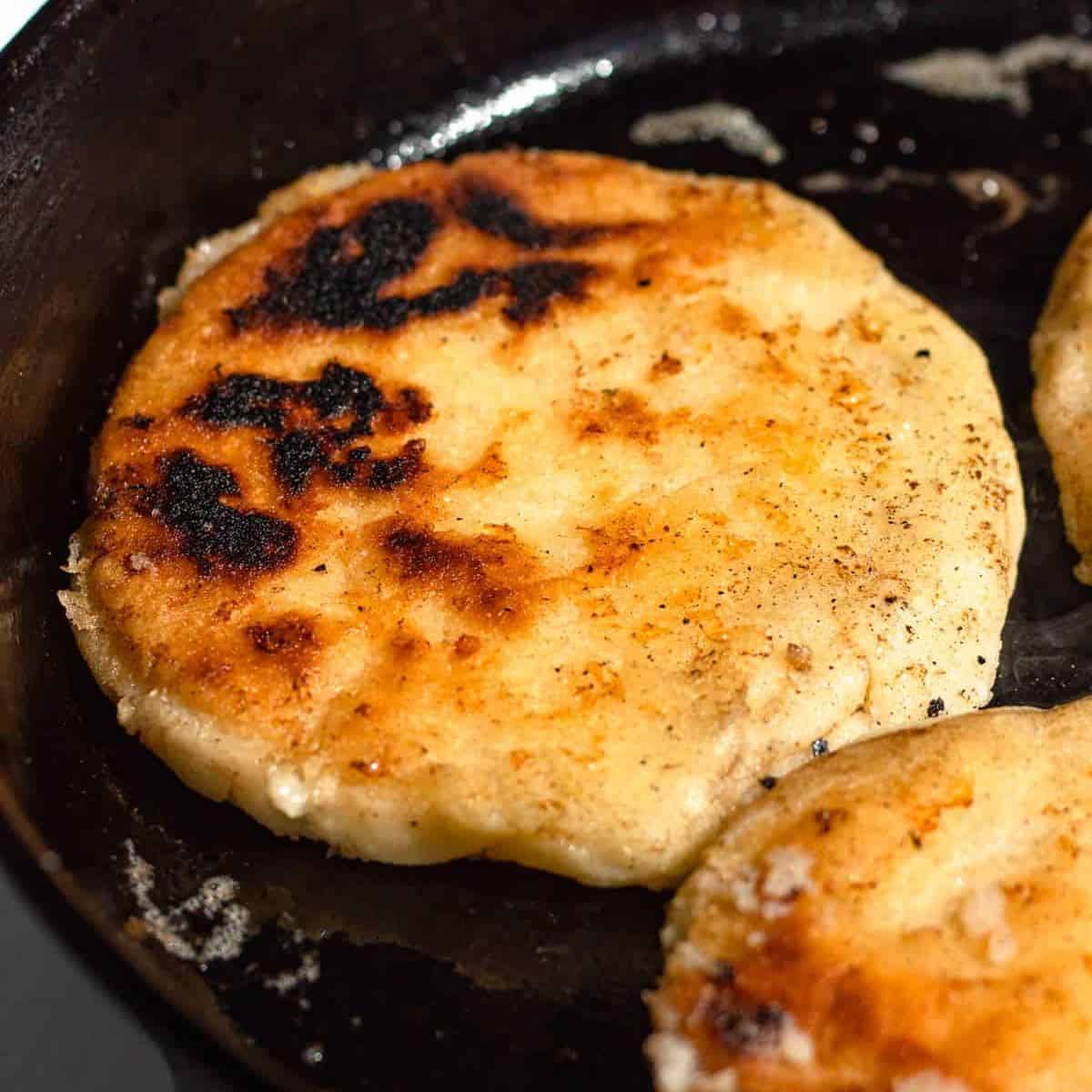
Latin American cuisine is rich in traditional dishes that showcase the diverse flavors and culinary techniques of the region. Two popular corn-based cakes, pupusas and arepas, have gained recognition for their unique qualities. Pupusas originated in Central America, specifically El Salvador, while arepas come from South America, particularly Colombia and Venezuela. Despite both being made from corn dough, the preparation, fillings, and flavor profiles of pupusas and arepas differ significantly. In this article, we will explore the background, ingredients, variations, and cultural significance of pupusas and arepas, as well as compare their nutritional values.
Background And History Of Pupusas And Arepas
Pupusas have a long history dating back to the indigenous Pipil tribes of El Salvador. The word “pupusa” is derived from the Nahuatl word “pupusi,” which means “stuffed.” Pupusas were traditionally made by filling corn tortillas with beans, chicharrón (pork), and cheese before grilling them on a hot comal. Over time, the fillings expanded to include various meats, vegetables, and cheeses.
Arepas, on the other hand, have roots in pre-Columbian times when corn was a staple food in South America. Indigenous tribes such as the Pemon and Arawak people in Venezuela and the Muisca people in Colombia prepared arepas by grinding corn kernels into a fine flour and then shaping them into round discs before cooking them on a hot griddle or in an oven. Arepas were originally eaten plain or with simple fillings, but today they are filled with a wide range of ingredients, including meats, cheeses, and vegetables.
Both pupusas and arepas have become beloved culinary traditions in their respective regions, and they continue to be cherished and enjoyed by people around the world.
Pupusas
Pupusas are a traditional dish hailing from El Salvador that have gained worldwide popularity. These delightful corn cakes are made by filling thick and chewy corn tortillas with a variety of delicious ingredients. Pupusas are typically filled with beans, cheese, and savory meats like chicharrón. They are then grilled on a hot comal until they develop a crispy exterior. Pupusas are often served alongside curtido, a tangy and crunchy cabbage slaw, and salsa. The combination of flavors and textures in a pupusa is what makes them so irresistible and beloved by both locals and visitors alike.
Ingredients And Preparation Of Pupusas
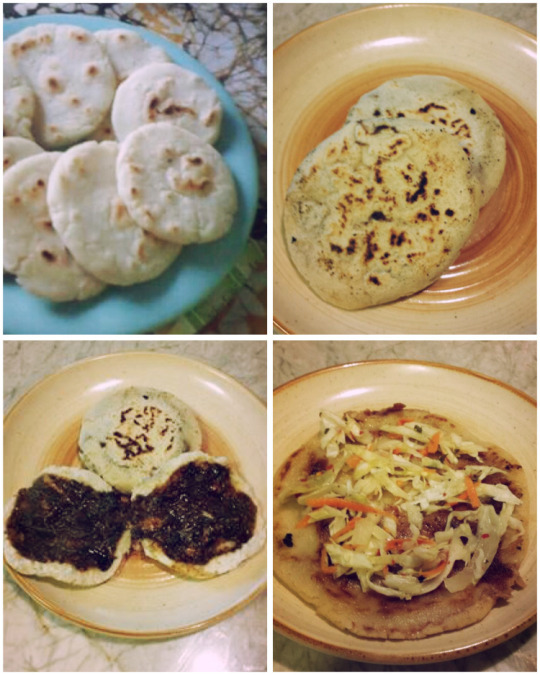
Pupusas are made with a simple combination of ingredients that includes corn flour, water, and salt. To prepare pupusas, the corn flour is mixed with water and salt to form a dough. The dough is then shaped into small balls and flattened into discs. The discs are filled with a variety of delicious ingredients such as beans, cheese, or savory meats like chicharrón. The edges of the dough are then sealed to enclose the filling. The pupusas are cooked on a hot comal until they develop a crispy exterior. The result is a delightful corn cake that is crispy on the outside and soft on the inside, filled with tasty flavors.
Varieties And Fillings Of Pupusas
There are a variety of fillings that can be used in pupusas, giving them versatility and flavor. Some popular filling options include:
- Revueltas: This is a combination of cheese, beans, and chicharrón (pork rinds), creating a hearty and savory pupusa.
- Queso con loroco: Loroco is a tropical flower bud that adds a unique and slightly tangy flavor when combined with cheese.
- Ayote: Ayote is a type of squash that is cooked and mashed before being used as a filling. It adds a sweet and creamy element to the pupusa.
- Cheese and jalapeño: For those who enjoy a little heat, this filling combines melted cheese with diced jalapeño peppers for a spicy kick.
These are just a few examples of the many fillings that can be found in pupusas, allowing for endless possibilities and a range of flavors to suit different preferences.
Arepas
Arepas are a traditional Latin American corn cake that originated in the northern regions of South America, such as Colombia and Venezuela. These cakes are made from masa harina, a pre-cooked cornmeal, which gives them a light and slightly sweet flavor. Arepas are typically round and thick, with a crispy outer layer and a soft and doughy inside. They can be enjoyed plain or filled with various ingredients such as cheese, meat, eggs, or beans. Arepas are often eaten as a main course or as a snack, and they are a beloved staple in Latin American cuisine.
Ingredients And Preparation Of Arepas

Arepas are made with a few simple ingredients, including masa harina (pre-cooked cornmeal), water, salt, and sometimes oil or butter. To prepare arepas, the masa harina is combined with water and salt to form a dough. The dough is then shaped into round discs and cooked on a griddle or in a skillet until golden brown on both sides. The cooking process gives arepas a crispy outer layer while keeping the insides soft and doughy. Arepas can be split open and filled with various ingredients such as cheese, meat, eggs, or beans, or enjoyed plain as a side dish. They are versatile and can be served as a main course or as a snack. Arepas are a popular staple in Colombian and Venezuelan cuisine.
Regional Variations And Toppings Of Arepas
Regional variations of Arepas can be found throughout Latin America, each with its own distinct flavors and fillings. In Colombia, the arepas are often larger and thicker, and are typically stuffed with cheese, meat, or eggs. In Venezuela, arepas are usually smaller and thinner, and can be split open and filled with a variety of ingredients such as black beans, avocado, chicken, or cheese. Other variations include the Dominican arepa, which is made with sweet corn and filled with sweet or savory ingredients, and the Ecuadorian arepa, which is made with fresh corn and typically served with cheese or butter. Toppings for arepas can vary as well, from salsa and guacamole to sour cream and pickled vegetables, adding an extra layer of flavor and texture to this beloved Latin American dish.
Flavor And Texture
When it comes to flavor and texture, Pupusas and Arepas offer distinct experiences. Arepas tend to be more savory with a corn-forward flavor that is enhanced by the fillings. On the other hand, Pupusas have a more complex flavor profile. The tanginess of the curtido (fermented cabbage) and the richness of the cheese and pork filling balance out the corn flavor of the dough.
In terms of texture, Pupusas have a slightly grainier texture due to the use of unprocessed cornmeal. They are cooked on a griddle until they puff up and become slightly crispy on the outside, giving them a pillowy texture. Arepas, on the other hand, are denser and more compact with a crispy and golden brown exterior. This contrast in texture adds to the overall enjoyment of these Latin American corn cakes.
Contrasting Flavors And Textures Of Pupusas And Arepas
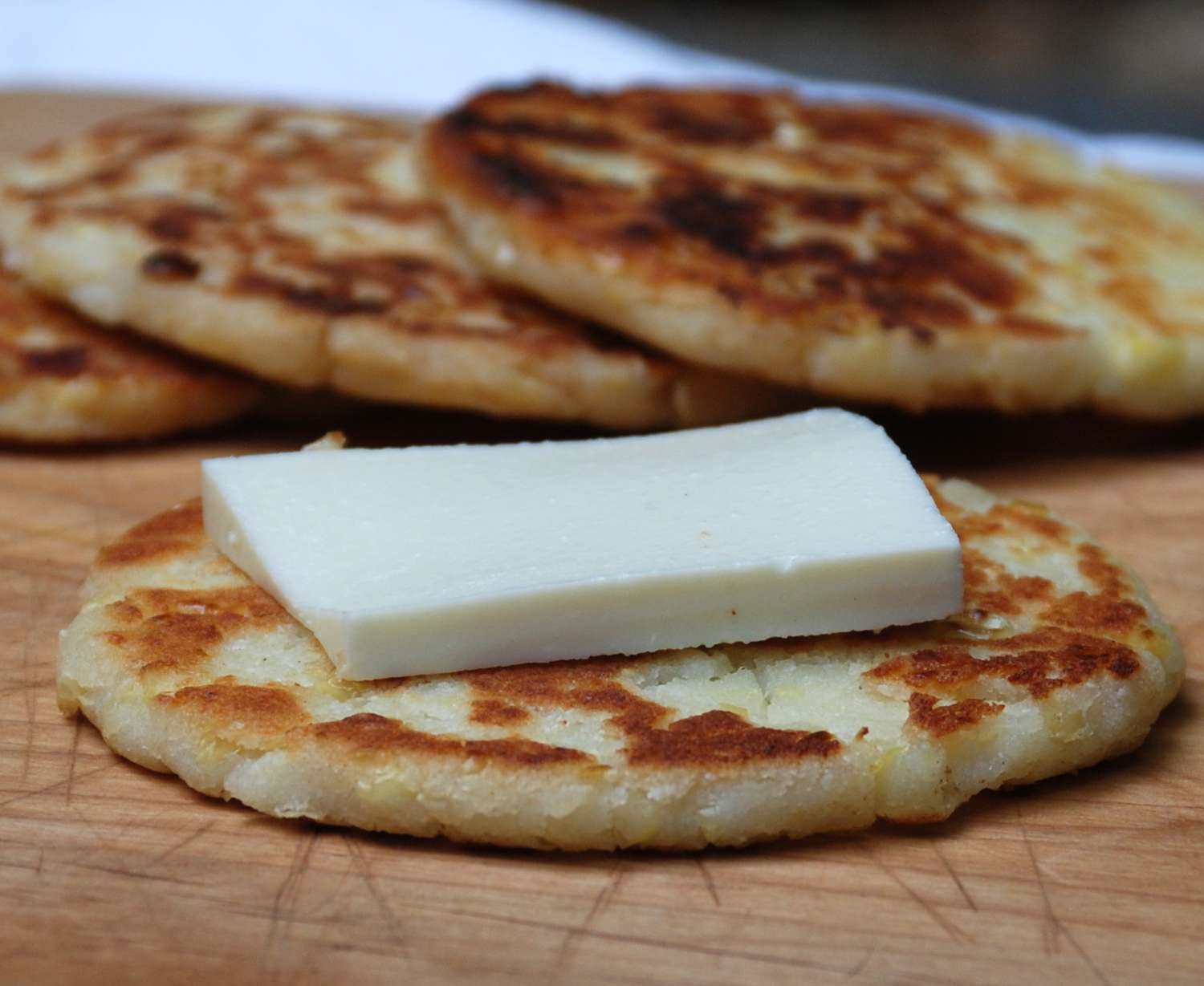
Pupusas and Arepas offer distinct experiences when it comes to flavor and texture. Arepas have a savory flavor with a corn-forward taste that is complemented by the fillings. On the other hand, Pupusas have a more complex flavor profile. The tanginess of the curtido, a fermented cabbage, and the richness of the cheese and pork filling balance out the corn flavor of the dough.
In terms of texture, Pupusas have a slightly grainier texture due to the use of unprocessed cornmeal. They are cooked on a griddle until they puff up and become slightly crispy on the outside, giving them a pillowy texture. Arepas, on the other hand, are denser and more compact with a crispy and golden brown exterior. This contrast in texture adds to the overall enjoyment of these Latin American corn cakes.
Flavor-wise, while both Pupusas and Arepas are made from cornmeal dough, the fillings and seasonings used in each dish give them their own unique taste. Pupusas are often stuffed with cheese, refried beans, and/or pork, which provide a rich and savory flavor. Arepas, on the other hand, are traditionally filled with ingredients such as shredded meat, cheese, avocado, or beans, offering a variety of flavor combinations. Additionally, some regions in Latin America have their own unique fillings and toppings for Arepas, further contributing to their diverse taste.
Texture-wise, Pupusas have a slightly more doughy and chewy texture, while Arepas are known for their crispy exterior and soft interior. Pupusas are cooked on a griddle until they puff up and become slightly crispy on the outside, giving them a light and fluffy texture. Arepas, on the other hand, are made from a thicker dough that is formed into a patty and then cooked on a griddle or in the oven, resulting in a crispy and golden brown crust and a softer bite inside.
Cultural Significance In Latin American Cuisine
Cultural significance in Latin American cuisine
Both pupusas and arepas hold deep cultural significance in Latin American cuisine. These corn cakes have been passed down through generations and are considered culinary treasures in their respective countries. Pupusas are integral to the Salvadoran culture, representing a symbol of national identity and pride. In Colombia and Venezuela, arepas are a beloved staple, showcasing the diverse regional variations and culinary creativity of these countries. These dishes are often enjoyed during festive occasions, family gatherings, and street food festivals, creating a sense of community and connection to Latin American heritage. The popularity and widespread recognition of pupusas and arepas highlight their cultural importance in Latin American cuisine.
Nutritional Value
Both pupusas and arepas offer a nutritional profile that contributes to a balanced diet. Pupusas, made with corn dough, provide essential nutrients such as carbohydrates, protein, and fiber. They can be stuffed with a variety of fillings, such as beans, cheese, or pork, adding additional protein and fats. Arepas, also made from cornmeal, are rich in carbohydrates and provide a good source of fiber. Toppings and fillings can vary, but common options include avocado, cheese, and meats, which can add healthy fats and proteins. Both dishes are often gluten-free, making them suitable for individuals with gluten sensitivities. Incorporating arepas and pupusas into a well-rounded diet can contribute to overall nutritional balance.
Nutritional Comparison Between Pupusas And Arepas
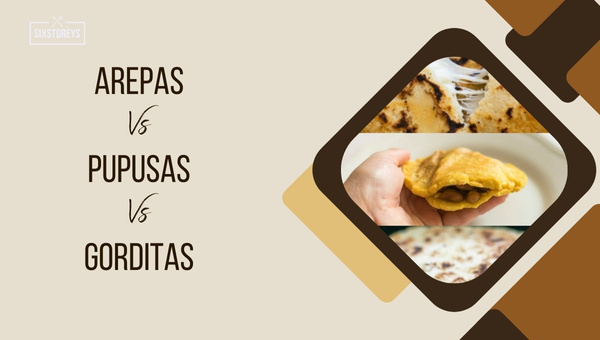
Both pupusas and arepas offer a nutritional profile that contributes to a balanced diet. Pupusas, made with corn dough, provide essential nutrients such as carbohydrates, protein, and fiber. They can be stuffed with a variety of fillings, such as beans, cheese, or pork, adding additional protein and fats. Arepas, also made from cornmeal, are rich in carbohydrates and provide a good source of fiber. Toppings and fillings can vary, but common options include avocado, cheese, and meats, which can add healthy fats and proteins. Both dishes are often gluten-free, making them suitable for individuals with gluten sensitivities. Incorporating arepas and pupusas into a well-rounded diet can contribute to overall nutritional balance.
Health Benefits And Considerations
Both pupusas and arepas offer several health benefits.
Pupusas, made with corn dough, are typically gluten-free, making them a suitable option for individuals with gluten sensitivities or allergies. They provide carbohydrates for energy and can be filled with ingredients like beans and vegetables, adding fiber to the diet. The fillings can also contribute protein and healthy fats.
Similarly, arepas are also often gluten-free and provide a good source of carbohydrates. The choice of fillings, such as lean meats and vegetables, can add protein, vitamins, and minerals to the dish.
However, it’s worth noting that some variations of pupusas and arepas can be higher in fat and sodium, depending on the ingredients used. Moderation and conscious ingredient choices are key to enjoying these dishes as part of a balanced diet.
Conclusion
In conclusion, the comparison of pupusas and arepas highlights the diverse culinary traditions of Latin America. Both corn cakes offer unique flavors and textures, showcasing the rich heritage and cultural significance of these beloved dishes. Pupusas, rooted in El Salvador, and arepas, popular in Colombia and Venezuela, demonstrate the fusion of ingredients and flavors that define Latin American gastronomy. Each has its own variations and fillings, providing a wide range of options for taste and dietary preferences. Whether you choose pupusas or arepas, both offer a delicious and satisfying experience that celebrates the vibrant flavors of the region.
Key Differences And Similarities Between Pupusas And Arepas
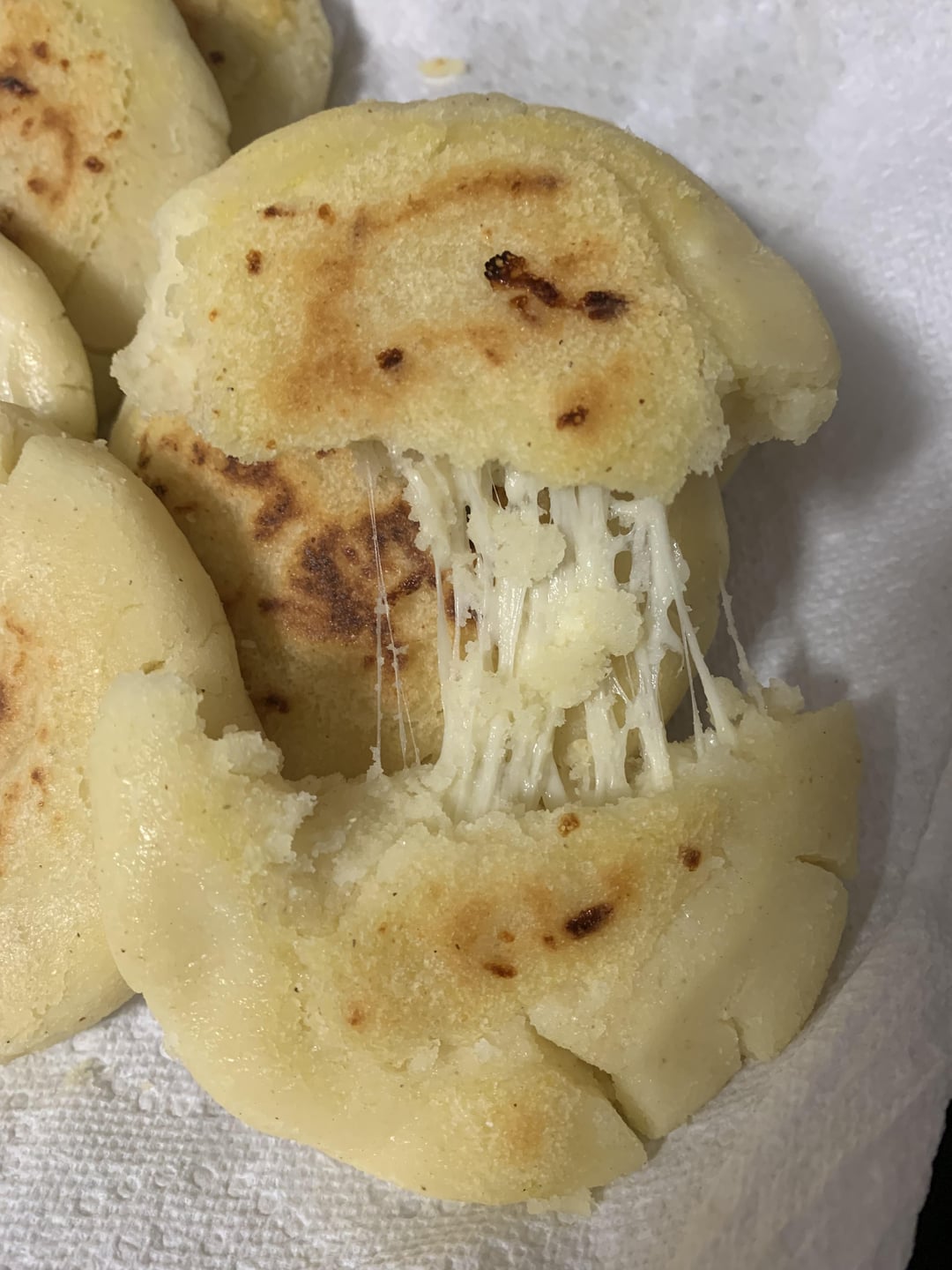
Pupusas and Arepas, both Latin American corn cakes, share some similarities but also have key differences. Here are the main points:
Similarities:
- Both are made from corn as their base ingredient.
- They are flattened and cooked on a griddle or skillet.
- They can be filled with various ingredients.
Differences:
- Pupusas are typically larger and thicker, while arepas are smaller and flatter.
- Pupusas are made with masa harina, while arepas are made with masarepa.
- Pupusas are a traditional dish from El Salvador, while arepas are popular in Colombia and Venezuela.
Overall, while both pupusas and arepas showcase the versatility of corn as a culinary ingredient, their distinct characteristics make them unique to their respective cultures.
Recommendations And Final Thoughts On Choosing Between The Two Types Of Corn Cakes
When it comes to choosing between Pupusas and Arepas, it ultimately boils down to personal preference and cultural experience. Both corn cakes are delicious in their own right, with unique flavors and textures. If you enjoy a thicker and heartier option, Pupusas from El Salvador may be your go-to choice. On the other hand, if you prefer a flatter and lighter option, Arepas from Colombia and Venezuela might be more to your liking. It is worth trying both to truly appreciate the flavors and cultural significance of these Latin American corn cakes. So, why not embark on a culinary adventure and savor the diverse tastes of Pupusas and Arepas?
FAQ About Pupusas Vs Arepas: Contrasting Latin American Corn Cakes
Q: What are pupusas and arepas?
A: Pupusas are traditional Salvadoran corn cakes typically filled with cheese, beans, or meat. Arepas, on the other hand, are Colombian and Venezuelan corn cakes that are thicker and can be filled or topped with various ingredients.
Q: How are pupusas and arepas different?
A: Pupusas are made with masa harina (corn flour) and filled before cooking, while arepas are made with pre-cooked corn flour and can be filled or topped after cooking. Pupusas are flat and round, similar to thick tortillas, while arepas are thicker and round with a split pocket for fillings.
Q: What are common fillings for pupusas and arepas?
A: Common fillings for pupusas include cheese (queso), refried beans (frijoles refritos), and chicharrón (pork). Arepas can be filled or topped with ingredients like shredded beef, avocado, cheese, or eggs.
Q: How are pupusas and arepas typically served?
A: Pupusas are often served with curtido (a pickled cabbage slaw) and tomato salsa. Arepas can be served as a side dish or snack and are sometimes split open and filled with various ingredients to make a meal.
Q: Are pupusas and arepas gluten-free?
A: Both pupusas and arepas are naturally gluten-free since they are made with corn flour. However, cross-contamination is possible, so it’s essential to verify ingredients and preparation methods, especially for those with gluten intolerance or celiac disease.
Q: Can pupusas and arepas be frozen for later consumption?
A: Yes, both pupusas and arepas can be frozen after cooking. To reheat, thaw them in the refrigerator overnight and warm them in a skillet or oven until heated through. The texture may vary slightly after freezing, but they can still be enjoyed.

We are introducing OH! NANA, where culinary excellence meets sustainability! Our journey began with a passion for creating delicious, nutrient-dense dishes while minimizing waste and environmental impact. At OH! NANA, we believe that great taste and nutritional value can go hand in hand with responsible sourcing and production. Our commitment to delivering intense flavors and high nutritional value is paired with a dedication to reducing waste in every aspect of our operations. From sourcing fresh, locally-grown ingredients to implementing efficient kitchen practices, we strive to positively impact both your health and the health of our planet.